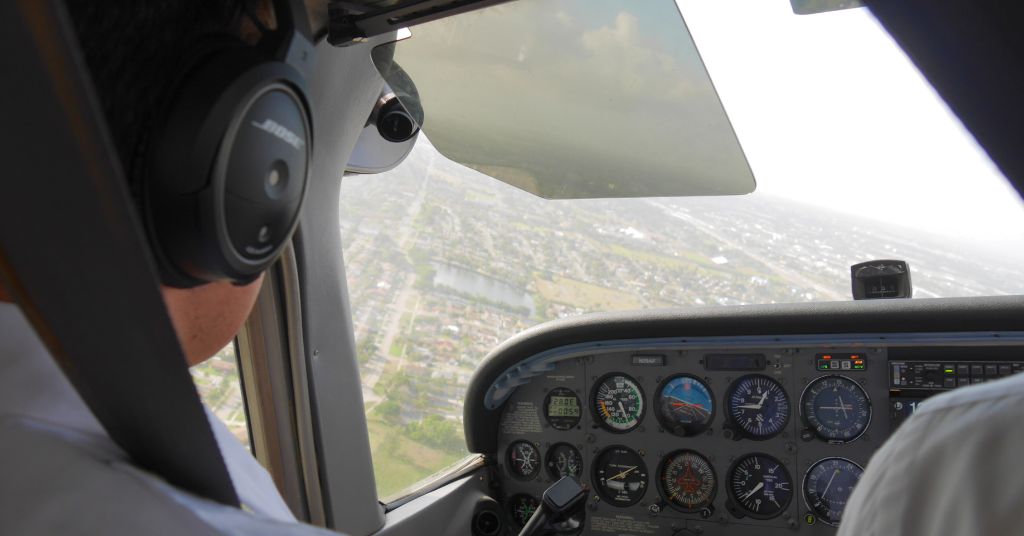For many pilots, the phrase “Pilot in Command” (PIC) is a proud milestone — the moment you took full responsibility for the aircraft, the crew, and the decisions in the air. But here’s a question every aviator should ask regularly: When was the last time you were the PIC?
If it’s been a while, you’re not alone. Life gets busy. Work, family, and other obligations often push flying to the background. But aviation isn’t something you can put on pause and expect to jump back into effortlessly. The truth is, every pilot needs to stay current, sharp, and growing — especially those who already hold their certifications.
Whether you’re a private pilot flying for fun or a professional working toward advanced ratings or airline goals, staying proficient as PIC isn’t just a box to check. It’s an ongoing responsibility that ensures you’re safe, skilled, and confident every time you take the controls.
What PIC Really Means
Being PIC isn’t just about logging time. It’s about leadership, responsibility, and continuous improvement. When you’re the pilot in command, you make the calls. You handle the unexpected. You ensure safety — not just by following procedures, but by anticipating what could go wrong and being ready when it does. That level of readiness can only be maintained through regular flying and deliberate skill building.
Proficiency vs. Currency: Know the Difference
You might be legally current based on FAA requirements. But are you truly proficient? Currency is what the regulations demand — for example, performing three takeoffs and landings within the past 90 days to carry passengers. But proficiency is your ability to fly well and safely under a variety of conditions. It includes comfort in emergency procedures, solid communication with ATC, smooth hand-flying skills, and clear decision-making even under pressure. Currency keeps you legal. Proficiency keeps you alive.
Staying Current Is Staying Safe
Flying regularly keeps your mind and muscle memory sharp. The more time that passes between flights, the more your skills fade — particularly in emergency procedures, situational awareness, and systems management. If it’s been months since you last took the controls, especially in challenging conditions or controlled airspace, you might not be as prepared as you think. That’s why FAA and insurance guidelines both strongly recommend frequent flying and structured refreshers for all active pilots.
What Do You Have in Place to Stay Sharp?
So, how do you stay proficient and grow as a pilot — especially if you’re not flying weekly? Here are some ways to stay on course:
1. Schedule Regular Flights – Even short local flights once or twice a month help maintain muscle memory and confidence. Make it part of your routine, just like staying in shape at the gym.
2. Book a Refresher with a CFI – Fly with an instructor who challenges you. Ask to simulate emergencies, fly into new airports, or review procedures you rarely use. You’ll leave the cockpit better prepared.
3. Practice in a Simulator – American Flyers offers simulator sessions for instrument proficiency, emergency training, and procedural refreshers. They’re a safe, efficient way to sharpen your skills.
4. Stay Engaged on the Ground – Proficiency doesn’t stop when the wheels do. Read accident reports, attend webinars, or complete online courses. The best pilots are students for life.
5. Set New Goals – Consider working toward your instrument rating, commercial certificate, or flight instructor certificate. Each new step adds depth to your flying and keeps you actively learning.
For CFIs and High-Time Pilots: Growth Still Matters
Even for seasoned instructors and commercial pilots, complacency can creep in. Logging PIC hours regularly doesn’t automatically mean you’re challenging yourself. Try flying with someone more experienced, operating different aircraft, or tackling unfamiliar airspace. Stay curious and humble — there’s always something new to learn.
The American Flyers Approach to Lifelong Proficiency
At American Flyers, we don’t just train pilots — we build lifelong aviators. Our programs are designed not only to help you earn your certificates but to keep you flying safely and confidently long after you graduate.
We offer:
- Structured refresher programs for lapsed or returning pilots
- Simulator-based proficiency sessions
- CFI mentorship and continuing education
- Advanced ratings and specialty training
- Flight review and instrument currency programs
Whether it’s been 30 days or 3 years since you last flew as PIC, we’re here to help you get back in the left seat with confidence.
Final Thought: Don’t Wait for “Someday”
Flying isn’t like riding a bike. Skills fade. Situational awareness dulls. The longer you wait, the harder it becomes to return with confidence. If you’re feeling rusty or out of routine, take that first step now. Get back in the cockpit. Fly with a CFI. Book a proficiency session. Set a new goal. Because being the Pilot in Command means more than logging hours. It means never settling for “just enough.” It means always striving to be better, sharper, safer. So — when was the last time you were the PIC?










